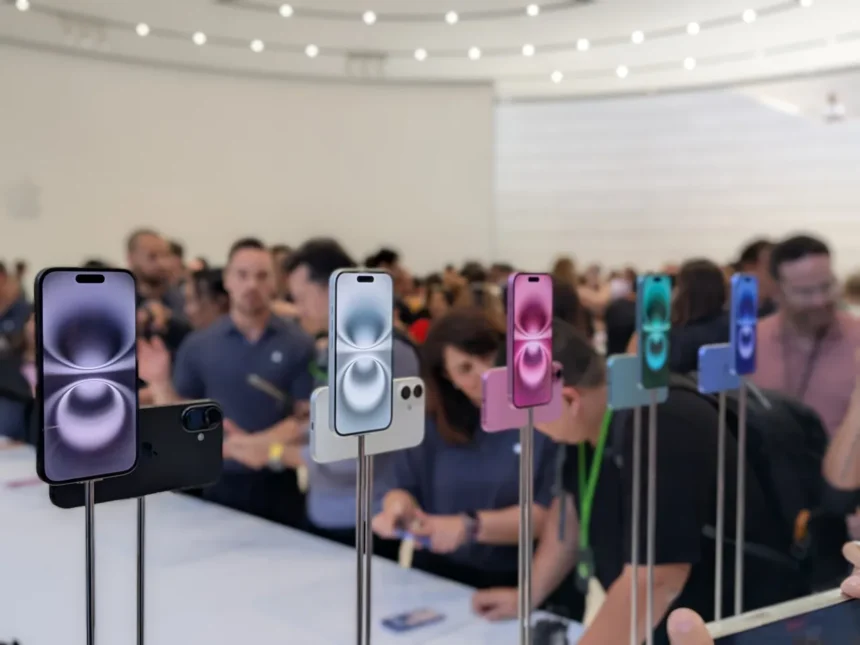At Apple’s highly anticipated “Glowtime” iPhone 16 event, hardware innovations stole the spotlight—but one critical topic went unmentioned: repairability. Given the rising tide of the Right to Repair movement and growing consumer interest in self-service repairs, the silence was surprising. However, a closer look after the event revealed that Apple is, in fact, making strides in this area. Several new features of the iPhone 16 lineup are specifically designed to enhance repairability, opening doors for both DIY enthusiasts and professional repair technicians.
A Breakthrough in Adhesive Design: Goodbye, Repairer’s Nemesis
One of the most notable upgrades in the iPhone 16 and 16 Plus models is a revolutionary adhesive that can be safely loosened with a small, controlled electric current from a 9-volt battery. This new approach is a game-changer for those familiar with the challenge of working with glue in modern smartphones. As devices have become slimmer, manufacturers—Apple included—have increasingly relied on strong adhesives in place of screws to secure internal components.
While this keeps devices sleek and streamlined, it has made them much more difficult to repair. In fact, Apple’s current Self-Service Repair kit includes a large and complex machine designed specifically to melt the adhesive for tasks like battery replacement. The introduction of this low-voltage release mechanism is poised to simplify the process drastically, making it more accessible and less intimidating for consumers.
It’s worth noting, though, that this innovative ionized adhesive is exclusive to the iPhone 16 and 16 Plus. Unfortunately, those opting for the higher-end Pro models won’t get this adhesive upgrade—but Apple hasn’t left Pro users without improvements.
Reengineered Interiors for Easier Access
For the iPhone 16 Pro and Pro Max, Apple has focused on redesigning the interior layout to make accessing and servicing key components easier. The most exciting change is the newfound ability to service the LiDAR Scanner—an essential feature for the Pro models that previously required a more involved repair process.
These design refinements suggest Apple is listening to feedback from repair professionals and enthusiasts who have long struggled with cramped, hard-to-reach components in tightly packed devices. The reengineered interior should make disassembly less of a headache for experienced repairers while keeping the structural integrity and premium feel that Apple’s Pro models are known for.
Introducing Repair Assistant with iOS 18
One of the most significant updates in Apple’s repairability push comes not from hardware but software. With iOS 18, Apple is rolling out a new tool called Repair Assistant, aimed at both professionals and everyday consumers. The tool is designed to help with the calibration of individual components—an area where Apple has traditionally been cautious.
Historically, Apple’s “parts pairing” policy ensured that certain components, like the display and camera, had to be linked to the specific device they were originally paired with, creating hurdles for third-party repairs. With Repair Assistant, Apple is looking to ease these restrictions by providing a system that can help recalibrate and certify new parts, preserving the performance and quality users expect.
This move seems like a step toward compromise in the ongoing debate between Apple’s quality control concerns and consumers’ desire for more repair freedom.
TrueDepth Camera Gets a Makeover in Repairability
Another exciting repair-related improvement is the newfound ability to repair the TrueDepth Camera on iPhone 16 models without the need to connect to a Mac. This marks a significant shift from previous iterations, where replacing or repairing components tied to Apple’s Face ID technology required proprietary tools and specialized procedures. With the new setup, users can now replace the camera module more easily without the extensive recalibration that was previously needed.
A Step Toward a More Repair-Friendly Future
While Apple’s iPhone 16 event didn’t explicitly highlight these improvements, the company’s move toward greater repairability is a promising step forward. Whether you’re a DIY enthusiast eager to take matters into your own hands or a professional repair technician looking to streamline your workflow, the changes in the iPhone 16 lineup bring exciting possibilities.
With innovations like ionized adhesives, redesigned interiors, and the introduction of Repair Assistant, Apple is making it easier than ever to keep your devices running longer. This isn’t just a win for consumers—it’s a shift that reflects growing global momentum for more sustainable, user-friendly technology.
As the Right to Repair movement continues to gain steam, it will be interesting to see how Apple and other tech giants respond. But one thing is clear: the iPhone 16’s improved repairability is a step in the right direction.










